This post may contain affiliate links. Please read our disclosure policy.
Congee, in its most basic form, is comforting rice porridge made by boiling rice in large amounts of water or broth until soft and thickened. A popular breakfast dish throughout most of Asia and parts of Europe, Congee is known by many names and even more varieties. Here I’ll be sharing how to make simple Chinese rice porridge.
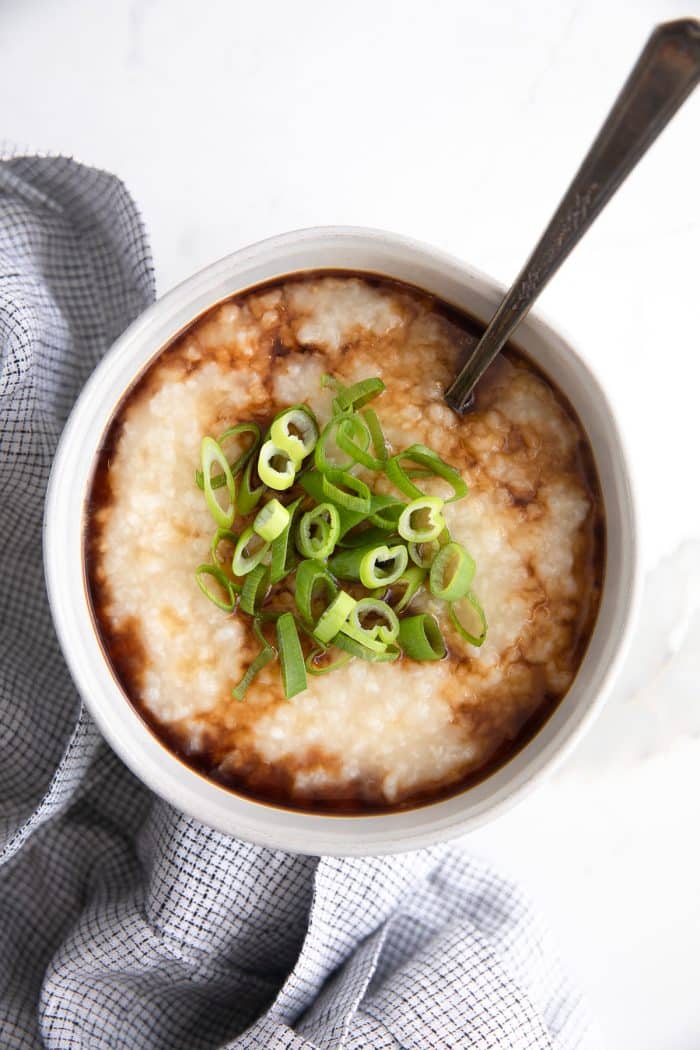
What is Congee?
Congee is a rice porridge or gruel. Thick, creamy, and one of Asia’s most beloved breakfast, lunch, and dinner foods, it goes by many different names and even more styles of preparation. Most congee recipes, however, share at least one common ingredient: rice (though some are made with other grains like cornmeal, millet, barley, or sorghum).
Congee is made by cooking rice in large amounts of water (or broth) until the rice grains become so saturated with liquid that they break down, forming a thick, buttery, porridge-like consistency. Although it can be sweet, congee is more often savory and a favorite recipe to enjoy throughout the cold and flu season as it is filling and easy to digest.
In Chinese cooking, congee (referred to as jook or jūk in Cantonese, 粥) can be made using different types of rice with different quantities of water. This congee recipe, for example, was made by boiling short-grain white rice with 12 times as much water, for a cooking ratio of 1:12. Once cooked, this thick white porridge serves as a blank canvas for countless garnishes and toppings including spring onions, crispy fried onions, or soy sauce.
Simple Congee Recipe Ingredients
- Rice
- Water (or broth)
- Salt
- Garnishes
What type of rice should you use?
I have read conflicting articles on what rice is “best” for congee. As such, I’ve determined that the type of rice will vary from one cook to another. In general, rice types you want to avoid include long-grain rice like basmati rice, sweet sticky rice, or brown rice (unless you have extra time to let it cook). Here I used glutinous rice (often labeled sushi rice here in the US), but medium-grain Calrose rice or even jasmine rice will work. If you plan to use longer-grain rice like jasmine, you will not need as much water or broth (approximately 2/3 of what is called for in the recipe, or 8 cups).
RELATED: Different Types of Rice: Varieties and What to Do With Them
Can I add chicken broth in place of water?
Yes. In fact, you’ll see that I used half chicken broth and half water. Since this recipe does not call for any aromatics (ginger or garlic), I was hoping to infuse additional flavor by adding some low-sodium homemade chicken stock. If you add store-bought chicken-stock, be sure to add low-sodium or reduced-sodium chicken stock and season with additional salt as needed after the congee has finished cooking.
How to Make Congee
1. Soak your rice. Since we’re using short-grain glutinous rice, I highly recommend soaking it in a big bowl of water for one hour before cooking. If you choose to use jasmine rice instead, you don’t need to soak the rice for as long, but don’t forget to wash it really well in several changes of clean water.
2. Cook the rice in a whole lot of water. As I mentioned previously, you may use all water, or use a combination of water with chicken broth, veggie broth, beef broth, or even bone broth. For every 1 cup of glutinous rice, you will need 12 cups of water (or other cooking liquid). Bring the rice and liquid to a boil, then reduce heat, cover partially (this is to allow venting so that the congee doesn’t come seeping over the top of the pot), and cook for approximately 60-90 minutes, or until thickened. Check the consistency and decide if it needs more liquid to thin, or a longer cooking time, to thicken.
Note – The longer you simmer your congee, the less visible, or well-defined the rice grains will appear.
3. Season and serve. Enjoy your rice porridge plain, or garnish this cherished comfort food with all your favorite condiments.
How to Serve Congee
This Chinese rice porridge is a popular recipe often served for breakfast, lunch, or even dinner. It is often served with Chinese crullers (youtiao, 油條), or fried sticks of dough (somewhat resembling Spanish churros sans sugar and cinnamon) that are dipped into the congee.
Popular garnishes include,
- Minced ginger and garlic
- Shredded chicken
- Ground pork
- Mushrooms
- Sesame oil or soy sauce
- Green onions (scallions)
- Soft-boiled or hard-boiled eggs
- White pepper
Storing and Reheating Congee
As congee sits and cools, you will notice that it also thickens as the rice grains continue to soak up excess water. Just as this is normal whenever noodles are added to chicken soup, it is also normal in the case of congee.
To store any leftover congee, transfer to a large container with a tight-fitting lid. Transfer to the refrigerator for up to 3-4 days.
To reheat, simply place the desired amount of congee in a bowl or saucepot with a small amount of boiling water and reheat in the microwave or stovetop until heated through.
More Rice Recipes,
Thai Mango Sticky Rice Recipe (Khao Niaow Ma Muang)
Easy Dirty Rice Recipe (Cajun Rice)
How to Cook Perfect Rice on the Stovetop
How to Cook Perfect Instant Pot Rice
Fast and Easy Cilantro Lime Rice Recipe
If you try making this Congee Recipe (Chinese Rice Porridge), please leave me a comment and let me know! I always love to hear your thoughts.
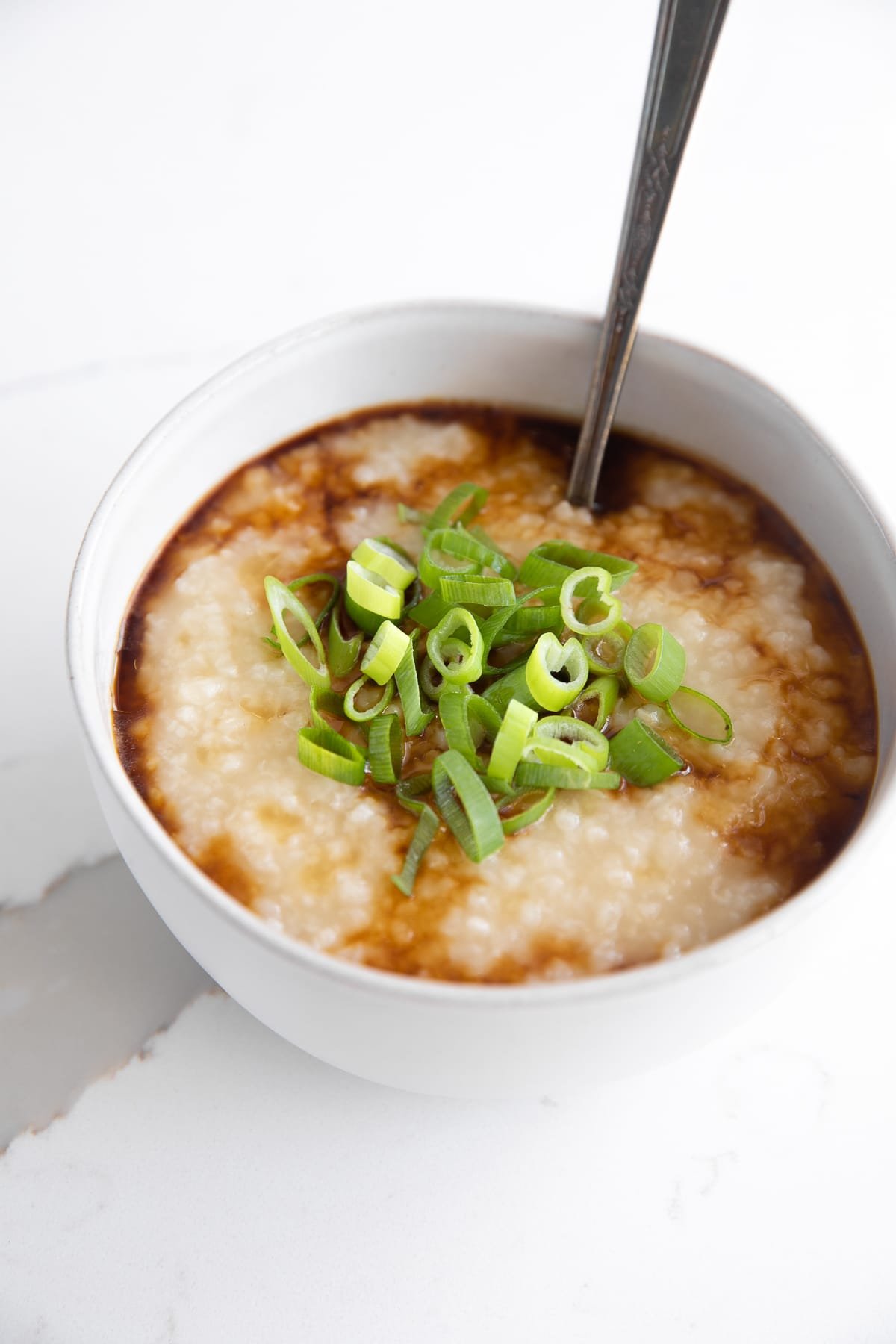
Congee Recipe (Chinese Rice Porridge)
Ingredients
- 1 cup glutinous rice, (see notes)
- 6 cups water
- 6 cups low-sodium broth, (chicken, beef, or vegetable)
- Salt, to taste
- 6 green onions, thinly sliced, to garnish
- Fresh ginger, julienned, to garnish
- Sesame oil and soy sauce, to garnish
Instructions
- Transfer rice to a large bowl and fill with cold water. Soak for 1 hour then drain and rinse thoroughly.
- Transfer the rice to a large pot. Fill with 12 cups of cooking liquid (water, chicken broth, veggie broth, beef broth, or some combination of each). Stir and bring to a boil over high heat. Once boiling, reduce heat to low and cover. Simmer gently, stirring every 10-20 minutes to prevent the rice from sticking to the bottom of your pot.
- After approximately 60-90 minutes, uncover and allow the congee to cook for an additional 15 minutes or so. Season with salt, to taste, and decide if the consistency is to your liking. Add additional liquid to thin, or continue to cook, uncovered, until desired consistency is reached.
- Serve congee in bowls garnished with fresh green onions, fresh ginger, sesame oil, and soy sauce, if desired.
Notes
- Shredded chicken
- Fried shallots, scallions, garlic
- Pepper
- Eggs
- Cooked fish
Nutrition
Nutrition information is automatically calculated, so should only be used as an approximation.
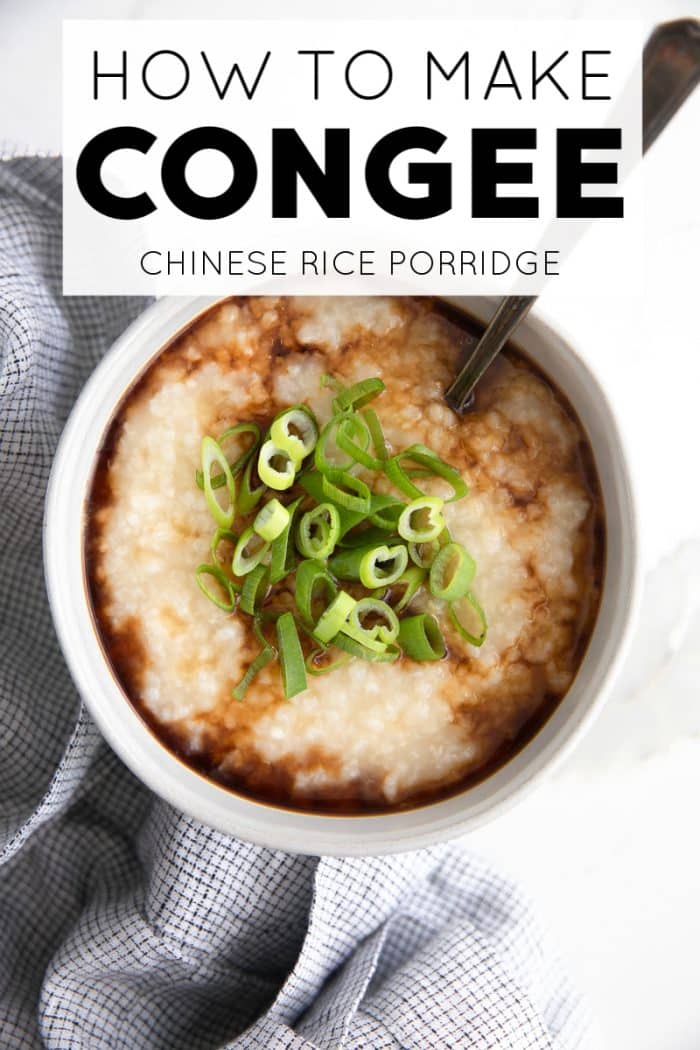
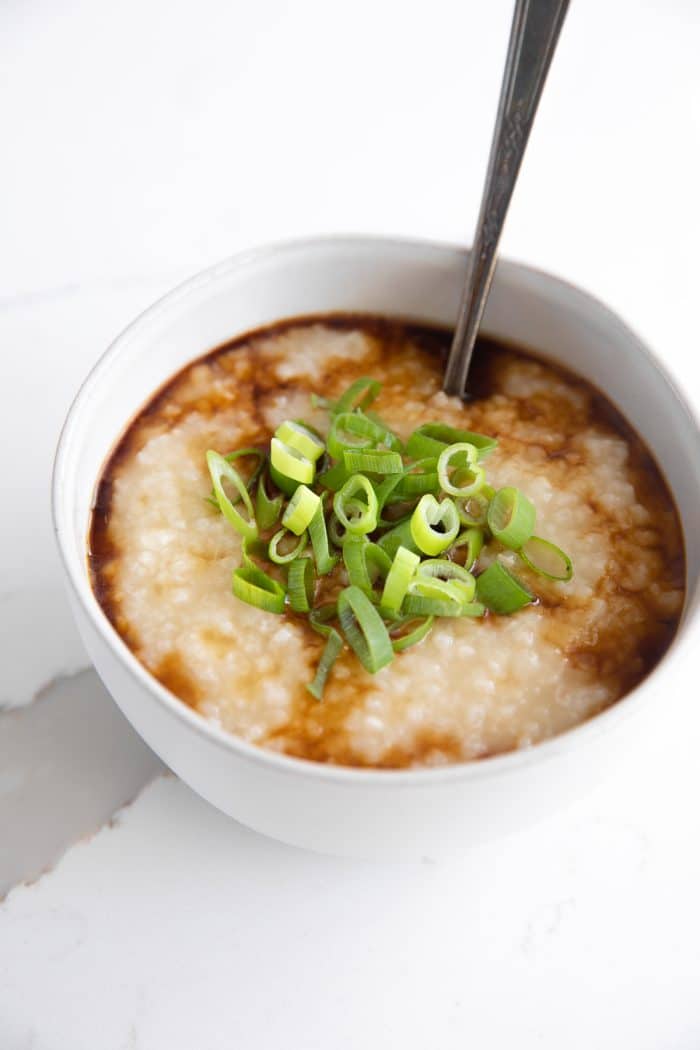
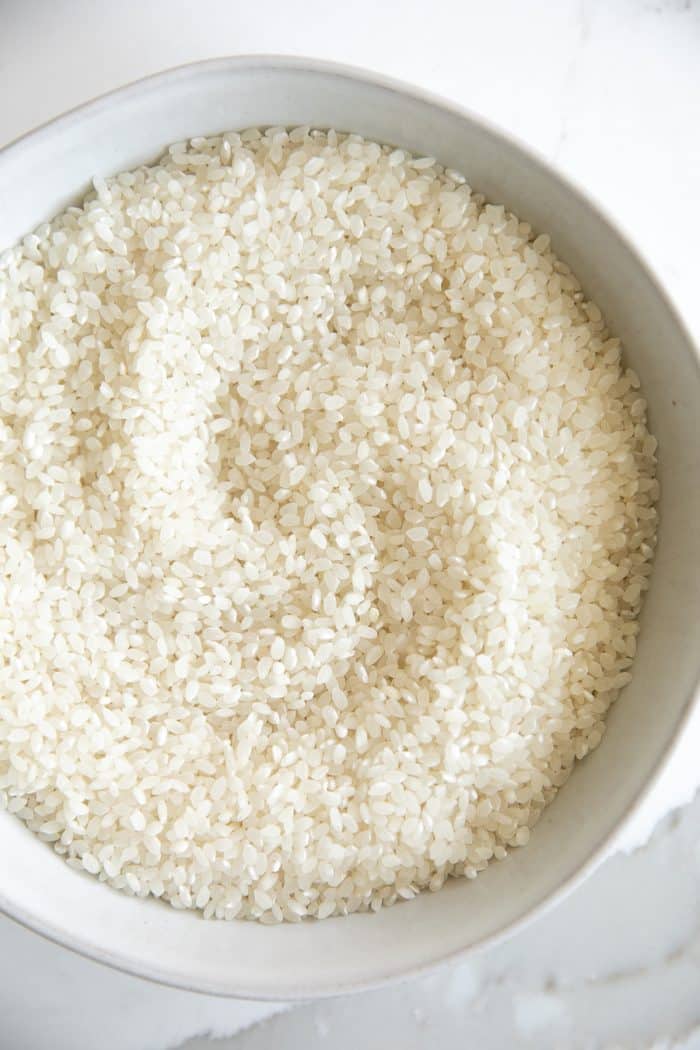
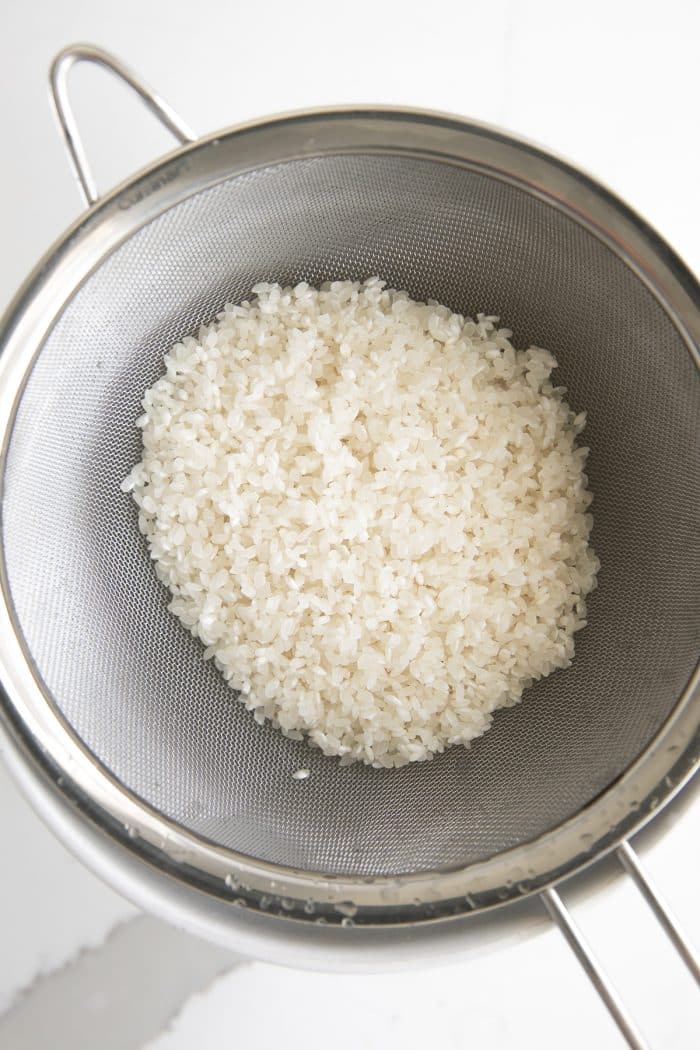
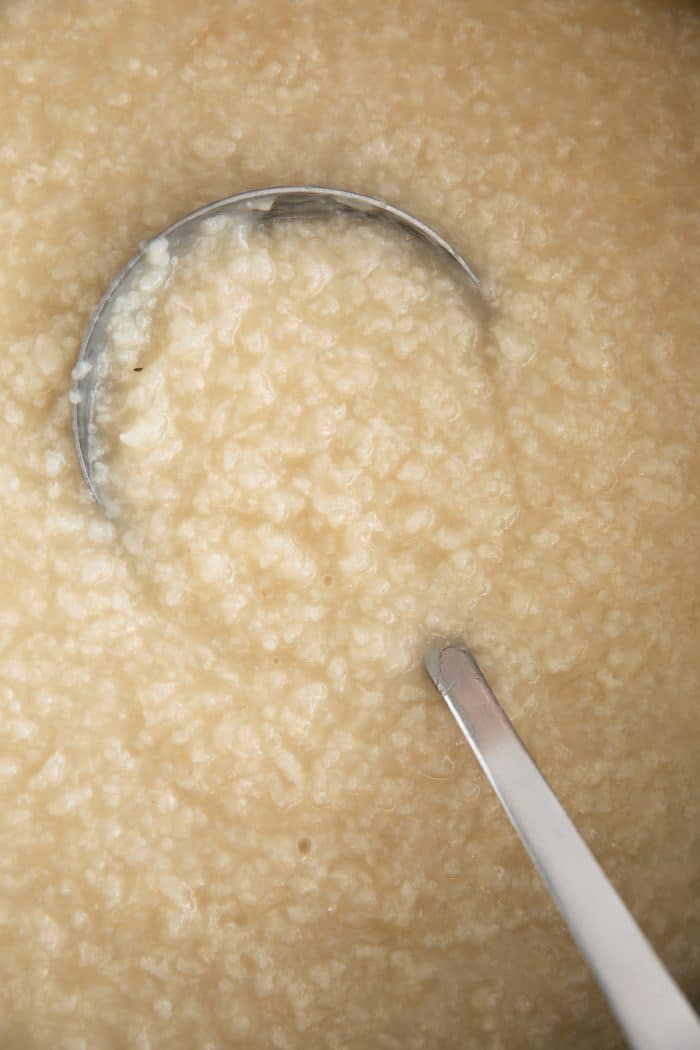
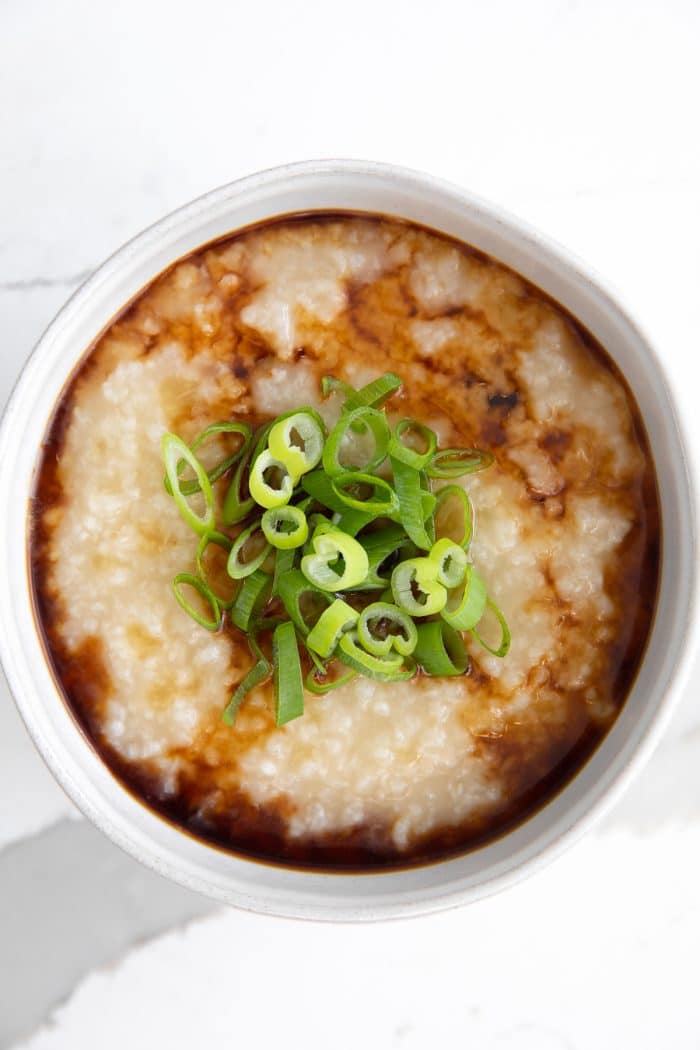
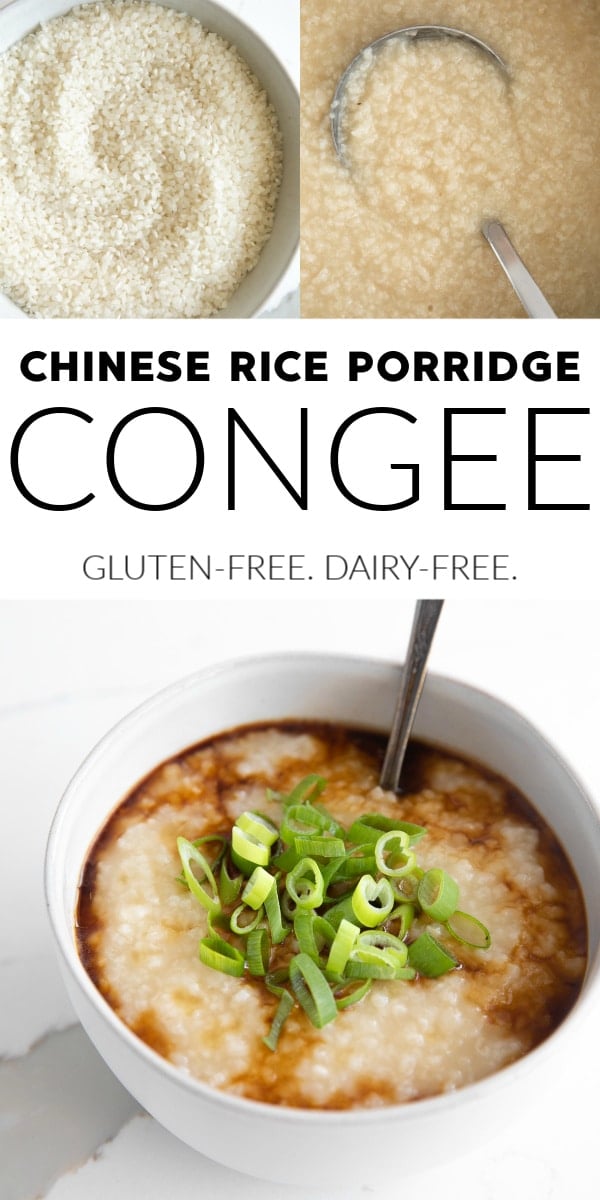
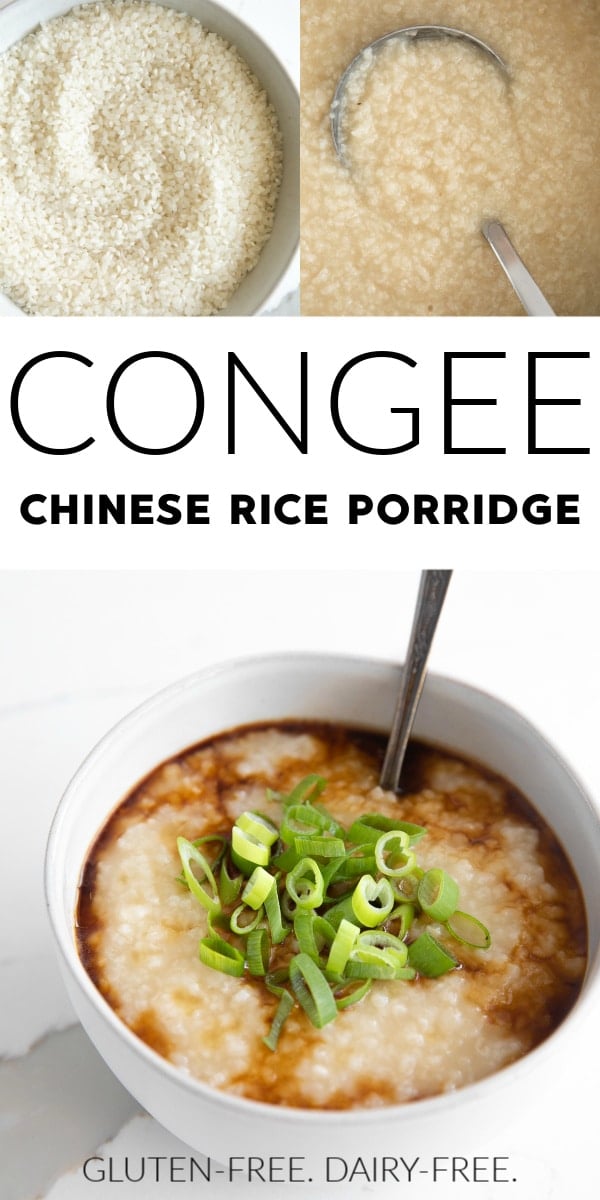













Made this today with short grain rice and it was fantastic. Thank you!
Question: was wondering if this could be made with black japonica ride. All I know is that it is a short, sticky rice similar to calrose or arborio. Found it in the bulk section of our local market and thought to give it a try.
Great question Jeanne! I have never tried it with that specific rice, but it should work 🙂